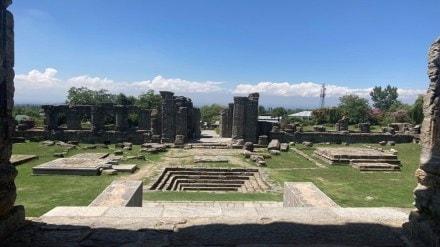Martand Sun Temple, a marvel of 8th-century architecture nestled amidst the breathtaking landscapes of Kashmir’s Anantnag area, is soon going to be restored by the J&K government. Dating back to the 8th century, this sacred site stood as a testament to the region’s rich cultural and historical heritage at one point in time. However, as per reports, the temple was destroyed on the orders of Sultan Sikandar Shah Miri. The temple was repeatedly attacked at various points in time including the time when militancy was on the rise in Kashmir (1988-90). Thousands of pilgrims visit the temple every year and have been demanding its restoration for a long time now, and the time has finally arrived.
The state government is set to call a high-level meeting today (Apr 1) at the Civil Secretariat in Jammu that will ultimately determine the final measures for safeguarding the temple. According to a notice issued by the Jammu and Kashmir Department of Culture, the meeting will be chaired by Principal Secretary, and attended by Director Archives, Archaeology and Museums (J-K), superintendent of Archaeologist (incharge) ASI (Srinagar circle).
Martand Sun Temple: Architecture and the sacred connection with Ayodhya
Situated on top of a plateau, the temple ruins and associated archaeological discoveries have unveiled its remarkable architectural fusion of Kashmiri architectural style and also elements from Gandharan, Gupta, and Chinese traditions. The temple features a colonnaded courtyard, housing its central shrine and encircled by 84 smaller shrines. Spanning 220 feet in length and 142 feet in width, it also integrates a pre-existing smaller temple within its grand design.
Not many know this but in January 2024, a sacred ‘Kalash’ from Ayodhya was placed at the Ram Temple located within the renowned Sun Temple premises in Jammu and Kashmir‘s Anantnag district, ahead of the consecration ceremony. Local residents, along with devotees from Uttar Pradesh and Tamil Nadu, participated in the installation of the ‘Kalash’.
In May 2022, Lt Governor Manoj Sinha attended a special religious ceremony called ‘Navgrah Ashtamangala Pooja’ at the temple. The Archaeological Survey of India (ASI) protested because they said it broke the rules since they didn’t get permission first. However, the J-K administration said it was okay because of rule 7(2) of the Ancient Monuments and Archaeological Sites and Remains Act, which allows religious events without special permission.
